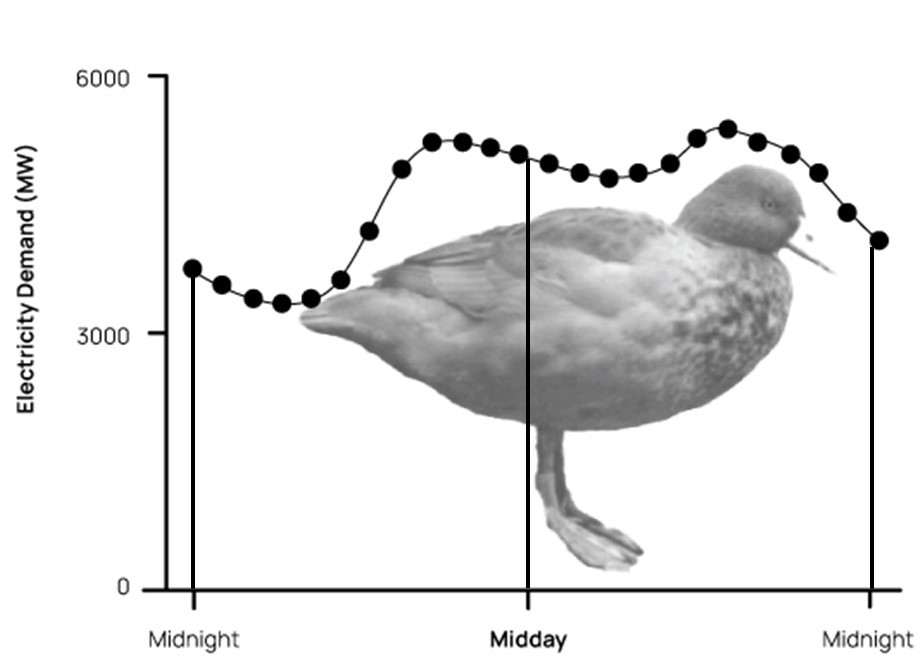How green is New Zealand’s electricity?
The Climate Change Commission has recommended that the government set a date for the end of coal-fired electricity generation[1]. While this would appear to be a worthwhile goal, a move to entirely do away with fossil fuel-based generation would likely be both far less practical and much more costly than many New Zealanders realise.
Where does our electricity come from?
It varies year to year, but in 2020 New Zealand’s electricity supply was about 81% renewable[2].
How do we stack up against the rest of the world?
The only countries in the OECD with close to 100% renewable electricity Costa Rica[3] and Iceland[4] – tied for first place at 99%.
After that we have Norway[5] at 95%, and then, falling just shy of the podium, God’s Own, at 81[6]%.
It’s not that these countries are trying a whole lot harder than New Zealand – it’s just that they’ve got an even greater abundance of renewable sources of electricity than New Zealand.
Starting in Latin America, Costa Rica – well, about two thirds comes from hydro dams, close to a third from a mix of wind and geothermal, and then the last one percent or so from biofuels, oil, and solar[7].
Then there’s Iceland (whose population may soon equal that of Christchurch or Wellington), which had the OECD renewable electricity crown until Costa Rica joined in 2020 and the title had to be shared. Nonetheless, Icelandics also have 99%+ renewable electricity, sourcing theirs from hydro (69%) and geothermal (30.8%)[8].
The Norwegians get 93.4% of their electricity from hydroelectricity, 4.4% from wind power, and 1.7% from natural gas[9]. Iceland has abundant hydro and geothermal resources, and Norway has achieved its highly renewable grid by drawing on its hydro resources to a much greater extent than New Zealand – or possibly just having more to draw on to start with.
Comparing ourselves to our nearest and dearest rival, and the world’s largest economy, we do okay. Australian electricity is a mere 19.7% renewable[10], and the United States only 18% renewable[11]. To be fair, this is not because we are necessarily ‘greener’ than these countries, it’s simply that our abundance of hydro, geothermal, and wind electricity generation relative to our population size allows for a high proportion of renewable generation.
Why don’t we just go for 100% renewable electricity generation?
If it were simple, we’d all be doing it. Well, you’d hope we would. The reality is, there are many factors to consider – including localised environmental impacts – when we attempt to increase our renewal energy generation.
Last year the Wind Energy Association[12] told the government that laws being proposed to protect biodiversity could constrain the ability to meet New Zealand’s wind potential. Which is to say, we essentially have to make choices between building more wind farms or protecting our native plants and animals.
A proposed run-of-river hydro scheme on the West Coast that would have displaced 51,120[13] tonnes of CO2 (about the same as the annual emissions of over 11,000 cars) was declined access to conservation land and could not be built. In this case, the decision maker was satisfied that impacts on flora and fauna would be minor[14] but felt the climate benefits of a new hydro scheme could not justify the impact on recreational and ‘intrinsic’ values of the area.
No decision on increasing our renewable generation can be made in isolation. Climate change is not the only needle on the dashboard – there will always be other sensitivities to consider. The concept of setting a date for 100% renewable electricity becomes even more questionable when we consider the nature of electricity supply and demand.
Our (fluctuating) supply and demand for electricity
When New Zealanders flick the jug on, click the TV remote, and turn on the hot water tap, we expect electricity to do its job. Uninterrupted electricity supply is a first world privilege few of us would ever want to do without.
But while our demand for electricity is ceaseless, it is not constant. The pattern of demand through the day is known as the duck curve because it (vaguely) looks like the curve of a duck’s back.
This shows demand for electricity[15] (at a day to day level) is low in the dead of the night (while people are sleeping), picks up in the morning as people rise, take showers, boil jugs, toast bread, and then go off to work for the day. It tapers off during the middle of the day, before picking up in the evening as people return from work, prepare dinner, shower, and consume electronic entertainment – watching TV, or, not reading in the dark, for example.
That’s just the day-to-day fluctuation. There is also a distinct pattern of demand across the year– namely high in the winter, and low in the summer.
Our supply (generation) of electricity has to fluctuate to meet this fluctuating demand, or the lights go out, which is where things tricky.
The months when electricity is in greatest demand, are the months when output from hydro and solar can be at their lowest[16]. This is a little inconvenient.
Seasonal Storage Challenge

With the exception of geothermal generation (which only accounts for 17.8% of New Zealand’s electricity) the output of our renewables varies considerably. Sometimes lakes and rivers are full, other times they’re low. Wind turbines can only operate when there’s the right amount of wind, and solar output (producing a fraction of a percent of the country’s electricity) only occurs when the sun shines.
It’s important to note that a lot of renewable electricity is ‘use-it-or-lose-it’. If we don’t consume it when we generate it, it’s gone.
| USE IT OR LOSE IT | CAN BE STORED |
| Wind | Coal |
| Geothermal | Gas |
| Cogeneration | Diesel |
| Solar | Some hydro |
| Some hydro |
The very nature of renewable generation sources means, with the exception of some stored water being released in hydro schemes, we can’t simply ramp up our renewal electricity supply to meet our fluctuating demand.
Our species has achieved many great technological leaps, but at the time of writing we’ve yet to master making the sun shine or the wind blow on demand.
Bridging the (fluctuating) gap
To bridge the daily and yearly shortfall between electricity demand and renewable generation, we need a source of electricity that can be drawn on when it’s needed, and have its output reduced when it’s not.
This flexibility is only currently possible with natural gas and coal, and to a limited extent, some hydro. When demand for electricity outstrips supply from renewable sources, fossil fuels are effectively the last safeguard against power cuts.

How great the gap is between reality and the dream of 100% renewable electricity varies season to season, and year to year. In 2016, renewable generation hit a record 85%, but in 2005 renewable generation was as low as 65.5%[17]. In some three month quarters, renewable generation approaches 90%, but in others, typically winter, it can be in the area of 75%.
In addressing this issue, coal and gas have some properties that renewable sources don’t. Coal, for example, while only supplying 5% of New Zealand’s electricity (some years less, some years more) can run 24/7 and provide baseload, it can be turned up or down, on or off, in matters of days and even hours, but it can also be stockpiled and drawn on to tide New Zealand through dry spells that reduce output from our lakes and rivers.
Natural gas can do this as well, but in some cases not to the same extent as coal (though natural gas does have lower emissions).
Renewable Energy has a Different Role in the Market to Thermal Generation

Genesis Energy has in the past pledged to stop using coal completely and rely solely on natural gas. The 2018 announcement on ending oil and gas exploration, combined with forecast gas production falling considerably this decade give some explanation as to why Genesis now caveats this commitment as ‘no coal use outside normal market conditions[18]’ – presumably, normal market conditions means enough water and gas.
While the supply of natural gas is likely to diminish in coming years, given the ban on offshore oil and gas exploration and the downturn of onshore exploration, the challenges of fluctuating demand for electricity and the variability of renewable generation will not. A result of increasing reliance on renewables will likely also mean more reliance on coal-fired generation to consistently keep the lights on.
Gas Production Profile (Forecast) to 2050
(petajoules)

Technology will save us from fossil fuels! Right?
Some people may wonder how it can be that in the 21st century we are still relying on coal and natural gas to back up our electricity generation. New technologies are being discussed and developed all the time, but they’ve still got a long way to go before we can turn our backs on fossil fuels In New Zealand.
An example is new battery technology – the ‘Tesla Power Wall’ being a well-known example. Storing surplus renewable electricity in batteries and drawing on the stored energy when it’s needed sounds sensible. Unfortunately, these batteries are still far more expensive than most people realise.

Genesis Energy, in its 2020 annual report, outlined the cost of trying to displace coal and natural gas from the electricity system with battery technology.
“For scale, 3,000GWh is about five times what Lake Taupo currently stores for generation, or 140 Tesla Powerwall batteries for every household in New Zealand. The Tesla option would cost in the order of $2 million per dwelling. That storage gap is currently met by thermal electricity generation, particularly at Huntly Power Station[20].”
That’s right – turning off fossil fuels in favour of Tesla batteries would mean an upfront cost of $2 million for every house in New Zealand. While this price could certainly fall in the next decade or so, it would be difficult to argue that the average Kiwi is ready to shoulder anything near that cost as it stands today.
Will we ever reach 100% renewable electricity?
It’s difficult to say if or when New Zealand will achieve 100% renewable electricity generation. Interim Climate Change Commission (ICCC) modelling had New Zealand achieving an average of 93% renewable by 2035[21]. That said, the ICCC and the Climate Change Commission have both recommended prioritising the reduction of emissions in transport and industry. One important part of this transformation will be relatively cheap and reliable electricity supply, and for the foreseeable future that means some combination of natural gas and coal in the electricity sector.
The reliability of electricity supply will become even more important as it becomes part of the energy mix in transport and industry.
As this transition plays out, coal and natural gas will more than likely have a small, and diminishing, but nonetheless vital role in keeping New Zealand’s supply of electricity affordable and reliable.
The reality of energy security
Despite the very clear evidence that New Zealand will not be ready to entirely move away from fossil fuels in the near future, some groups, including the Climate Change Commission, have called a date by which coal fired electricity generation must end[22]. This government is prioritising 100% renewable electricity generation by 2030.
Even Genesis Energy, an electricity generator in which the government holds a 51% share has argued against this[23].
Its submission to the Climate Change Commission stressed that in the absence of a clear and credible replacement technology, it would not be in New Zealand’s best interest, with regards to energy security, to set a termination date for back up assets.
While it is safe to say almost all New Zealanders would want to have a zero emissions electricity sector as soon as possible, the reality is this is not yet simple, practical or affordable.
References
View the electricity references page here.



